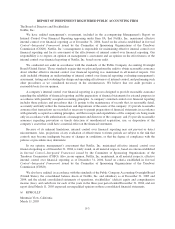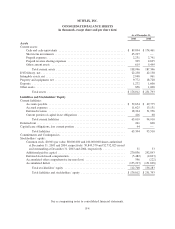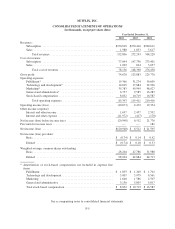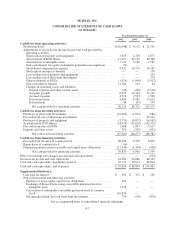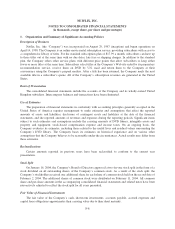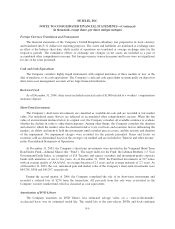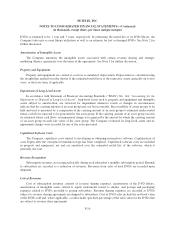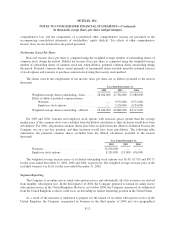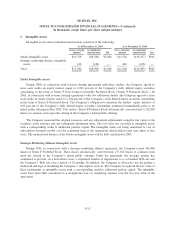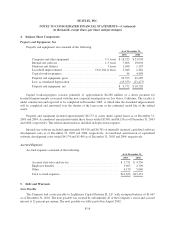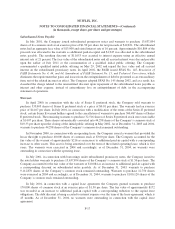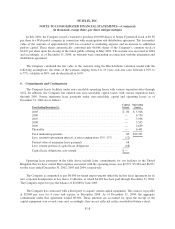NetFlix 2004 Annual Report Download - page 68
Download and view the complete annual report
Please find page 68 of the 2004 NetFlix annual report below. You can navigate through the pages in the report by either clicking on the pages listed below, or by using the keyword search tool below to find specific information within the annual report.NETFLIX, INC.
NOTES TO CONSOLIDATED FINANCIAL STATEMENTS
(in thousands, except share, per share and percentages)
1. Organization and Summary of Significant Accounting Policies
Description of Business
Netflix, Inc. (the “Company”) was incorporated on August 29, 1997 (inception) and began operations on
April 14, 1998. The Company is an online movie rental subscription service, providing subscribers with access to
a comprehensive library of titles. For the standard subscription plan of $17.99 a month, subscribers can have up
to three titles out at the same time with no due dates, late fees or shipping charges. In addition to the standard
plan, the Company offers other service plans with different price points that allow subscribers to keep either
fewer or more titles at the same time. Subscribers select titles at the Company’s Web site aided by its proprietary
recommendation service, receive them on DVD by U.S. mail and return them to the Company at their
convenience using the Company’s prepaid mailers. After a title has been returned, the Company mails the next
available title in a subscriber’s queue. All of the Company’s subscription revenues are generated in the United
States.
Basis of Presentation
The consolidated financial statements include the accounts of the Company and its wholly-owned United
Kingdom subsidiary. Intercompany balances and transactions have been eliminated.
Use of Estimates
The preparation of financial statements in conformity with accounting principles generally accepted in the
United States of America requires management to make estimates and assumptions that affect the reported
amounts of assets and liabilities, disclosure of contingent assets and liabilities at the date of the financial
statements, and the reported amounts of revenues and expenses during the reporting periods. Significant items
subject to such estimates and assumptions include the carrying amounts of DVD library, intangible assets and
property and equipment, stock-based compensation expense and income taxes. On an ongoing basis, the
Company evaluates its estimates, including those related to the useful lives and residual values surrounding the
Company’s DVD library. The Company bases its estimates on historical experience and on various other
assumptions that the Company believes to be reasonable under the circumstances. Actual results may differ from
these estimates.
Reclassifications
Certain amounts reported in previous years have been reclassified to conform to the current year
presentation.
Stock Split
On January 16, 2004, the Company’s Board of Directors approved a two-for-one stock split in the form of a
stock dividend on all outstanding shares of the Company’s common stock. As a result of the stock split, the
Company’s stockholders received one additional share for each share of common stock held on the record date of
February 2, 2004. The additional shares of common stock were distributed on February 11, 2004. All common
share and per-share amounts in the accompanying consolidated financial statements and related notes have been
retroactively adjusted to reflect the stock split for all years presented.
Fair Value of Financial Instruments
The fair value of the Company’s cash, short-term investments, accounts payable, accrued expenses and
capital lease obligations approximates their carrying value due to their short maturity.
F-8







